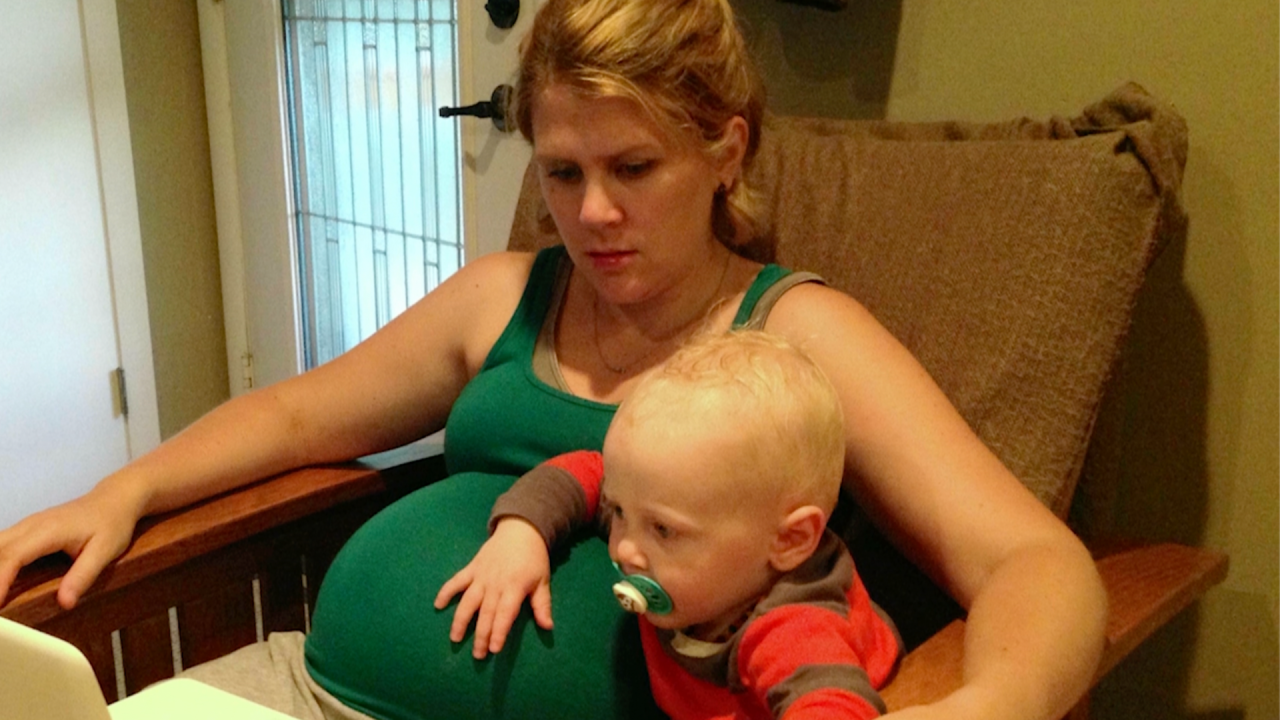*Warning: this story discusses the sensitive topic of a the death of a fetus.
Amanda Duffy remembers the day before she was set to give birth.
"I sat on the bench and just like reveled in this day where I'm like, 'This is it, this is our last day of a family of three. Tomorrow we're going to be a family of four,'" Duffy told Scripps News.
Getting to that day was a relief, after a diagnosis weeks earlier that she says wasn't really explained.
"It was called polyhydramnios, but nobody told me that until I brought it up in my appointment because I started noticing that my daughter's movements were different in utero," she recalled.
She was assured the decrease in movement was normal. Her intuition said otherwise. One day before a scheduled cesarean section, she went to the emergency room.
"We parked in the parking lot and my husband just said, 'How are you doing?' And I said, 'I just need to hear the baby's heartbeat,' and something inside me just finished that sentence with, 'but you're not going to,'" she recalled.
She was eventually rushed to an emergency C-section when doctors had trouble finding a heartbeat.
"And I opened my eyes and she said, I'm so sorry, but there you have a beautiful baby girl. We tried for 15 minutes to bring her back and we couldn't get her heart rate back. She was born with a double umbilical cord, so the umbilical cord was wrapped around her neck twice, very tightly, cutting off all circulation and blood flow," she said.
One in every 175 births in the U.S. are stillborn. According to the CDC, that's an overall decrease since it began tracking stillbirths in 1990, but it's been slowly increasing in the past few years.
"The rates of stillbirth in the U.S. are higher than other high-income nations. We're at the bottom compared to other high-income nations," said Dr. Uma Reddy, an OBGYN and clinical document review panelist with the American College of Obstetricians and Gynecologists.

Health
US births fell last year, marking an end to the late pandemic rebound
Experts say there are many risk factors but no exact cause, and stillbirths disproportionately impact Native Americans and African Americans.
A 2018 study published in the journal Obstetrics and Gynecology shows 1 in 4 stillbirths may be preventable, calling for greater identification of things like placental insufficiency by doctors.
"When the baby's not growing well, then we know, especially in the third trimester, then we're concerned about placental insufficiency, when the placenta's not working well," Dr. Reddy explained.
A 2022 ProPublica investigation suggests there has been a lack of federal funding into stillbirth research, and updated guidance for doctors has lagged for years.
However, a bipartisan bill, recently passed in the House, would allow already existing funding to go towards stillbirth prevention programs.
"I wish somebody would have talked to me about stillbirth, about the risk factors. Nobody mentioned stillbirth, I didn't know that that was even a thing anymore," said Duffy.
In the meantime, parents who've suffered losses have created apps like Count the Kicks, which help an expectant parent track a fetus' movement.
"If I would have known to track and to be consistent about tracking Reese's movements, I know I could have seen a decrease in her movements as we got closer to delivery," said Duffy.
"I walked out of the hospital and I said to my husband, this just can't be it," said Bernice Quesenberry, who started an organization called Chasing the Rainbows after also experiencing the death of her newborn daughter Brooke shortly after birth.
"Seeing the silhouette of your child, you know, at all these major events and family functions and always realizing or thinking about and having to process what your child would be like, what they would be doing, what they would sound like, what they would smell like, you know, all of those things," she described.
Now her organization helps people who suffer the loss of a child understand those feelings — with things like peer and group counseling, help finding funding for the funeral and care packages. She also offers this advice to loved ones and friends on how they can help.
"Go up to them and acknowledge the loss first. That's what we always tell people, you know, by saying their name and if they didn't name them, just if you know about the loss, just saying you know, I am here for you. I am here to listen whenever you want to talk, and actually genuinely mean it," said Quesenberry.
"It's a lifelong trauma. And even if they get pregnant in the next pregnancy ... they relive the trauma of being pregnant. And so it's so important that we provide adequate support," said Dr. Reddy.
Duffy's family has grown, a stuffed elephant now representing baby Reese in family photos. Today, her motivation is encouraging others to trust their instincts.
"You can advocate for your baby while you're pregnant. Your intuition is screaming at you and it's smart. It knows you. Honor that," she said.



